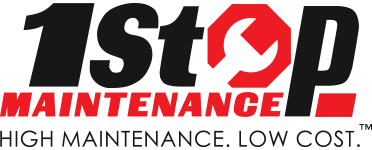Do you remember what opening your first restaurant felt like? It was the dream that consumed your mind for as long as you can remember, and it came true. You can still remember the thrill as every single detail of the experience you designed in your head came to life.
When you thought through every part of your new business, chances are, you overlooked a key area. You are not alone. Most restaurateurs don’t start to think about maintaining their facilities and equipment until something breaks.
Why is this? For one reason, it’s not as exciting as the rest of the business. Customers in seats, beautifully plated food, the aroma and music filling the air—all of these are wonderful subjects about which to dream. It’s not as exciting to sit down and create a system for facilities maintenance. Searching for and establishing a network of contractors to make repairs is not as fun. Developing a plan to track warranties on the oven range doesn’t get your creative juices flowing. You simply do not think about maintenance until it’s time to fix something.
Here’s the reality, though: the maintenance of your equipment and facilities is just as important to your guests’ experience as the quality of your ingredients. It’s also just as important to your bottom line.
According to a recent survey by an industry association, chains who have set up formalized processes, technology, and people in place to manage repairs spend 50 percent less than the industry average. What do you currently spend on facilities and equipment maintenance at your restaurants? What would a 50 percent reduction in facilities and equipment maintenance do for your restaurant?
Cost reduction aside, what impact does a clean facility have on your customers’ experiences? What effect does if have if your facility was dirty and in disrepair? How does a kitchen with a broken-down grill affect your ability to get food out to your patrons on time? The upkeep of your facilities and equipment is critically important to your success as a restaurateur. For this reason, this area of your operations demands your proactive attention.
You need to set up a proper maintenance program. So what are its components? The exact answer depends on the number of locations you have and your specific goals, but here’s a list of four general components every maintenance program should have.
The first component is reactive maintenance workflow. What happens when a repair is needed? Who needs to know? Who is in charge of handling it? Where do you track the information? Will you hire a contractor to make the repair, or is there someone in-house who will do it? Who makes cost decisions?
Second, you need to set up a preventive and routine maintenance program. Most warranties on equipment, from the under-the-counter chiller to the HVAC unit on your roof, will require a minimum level of preventative maintenance in order to keep the warranty valid. You also have routing maintenance for hood vents, grease traps, and regular cleaning. Finally, you need to plan for upkeep like kitchen footing re-grouts, re-staining bar tops, re-carpeting, and re-painting.
Third is the tracking system. This can be anything from a spreadsheet to a work order management tool. Whatever you decide to use, you should have a full list of the equipment and assets at your location—including each unit’s manufacturer, model, serial number, and warranty information, as well as its number of repairs, the date of those repairs, the cost of those repairs, and any notes and communication regarding the repairs. A proper tracking system will be able to show you what’s going on in each of your locations, as well as each location’s history.
Finally, you need to have pre-qualified contractors. It does not matter whether you have in-house people who can make repairs or not. There will come a time when you’ll find yourself in a pinch, and you will need a “go-to” list of repair companies you can count on to get your equipment or facility up and running. (Can you say “toilet overflow during the middle of the dinner rush”?) Your contractors should be willing to work based on time and material, and should be fully licensed and insured. High-volume contractors should have a signed Master Service Agreement with you. Additionally, you need two contractors per trade so you will always have a back-up. You simply cannot afford to shut down your restaurant during a busy time to scour Google for someone to fix your fryer because your first-choice repair company can’t make it.
There is one more option for maintenance management. You can outsource it completely. Your restaurant chain may be too large to manage a maintenance program with operations or store management employees, but not large enough to support a full-time facilities maintenance professional. There are companies who specialize in outsourced maintenance management for this reason. They are already set up with all the components of a proper maintenance program, including a contractor network. This option will help you since it eliminates the time necessary to set up your own maintenance program the right way.
You have recipes for your food. You have processes for your service staff. You need to have systems in place to manage your equipment and facilities repairs, too. The better you prepare for a maintenance situation, the faster you will get your restaurant back to its full operating condition. Be prepared!
Republished from Full-Service Restaurants

